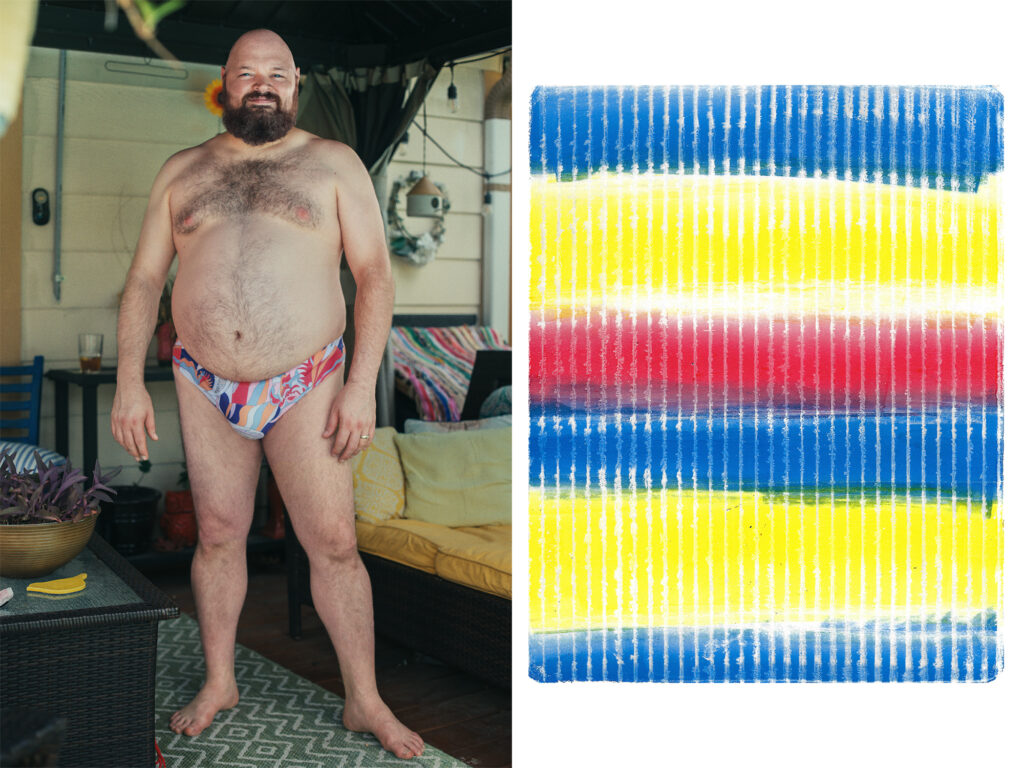
All art images are courtesy of the artist. 595, 2025, Acrylic print on paper, 8″ x 10″.
Justin Jessup
Justin Jessup has been a friend of mine for several years. Always considerate and handsome. You will notice his Midwest sensibilities once he opens up to you. Over the summer, we met to talk about his printmaking while battling the harsh sun.
P: What ideas or concepts are you interested in exploring with this work?
J: I don’t really have a plan when I sit down to create. Most of the time, I’m just as surprised as everyone else by what I create. It just happens organically. Sometimes I have selected colors, objects, and other tools for texture before I start a print. It comes to me as I create. I have never been much of a sketchbook guy. That would require more preplanning, and I have found that usually dampens my creative flow.
P: When did you start making these gelli prints? Tell me about the process.
J: I have been doing printmaking since college but started using a gelli plate in January 2025. The process begins with rolling out a layer of acrylic paint on the gelli plate. I use stencils and other objects laid on the gelli plate.
Once you lift the objects, a void is left on the plate. The original layer of paint dries, and then you can roll on another layer. While the second layer is still wet, I lay paper on the plate and then let it dry. You pull the paper off, and the image has transferred from the plate to the paper.
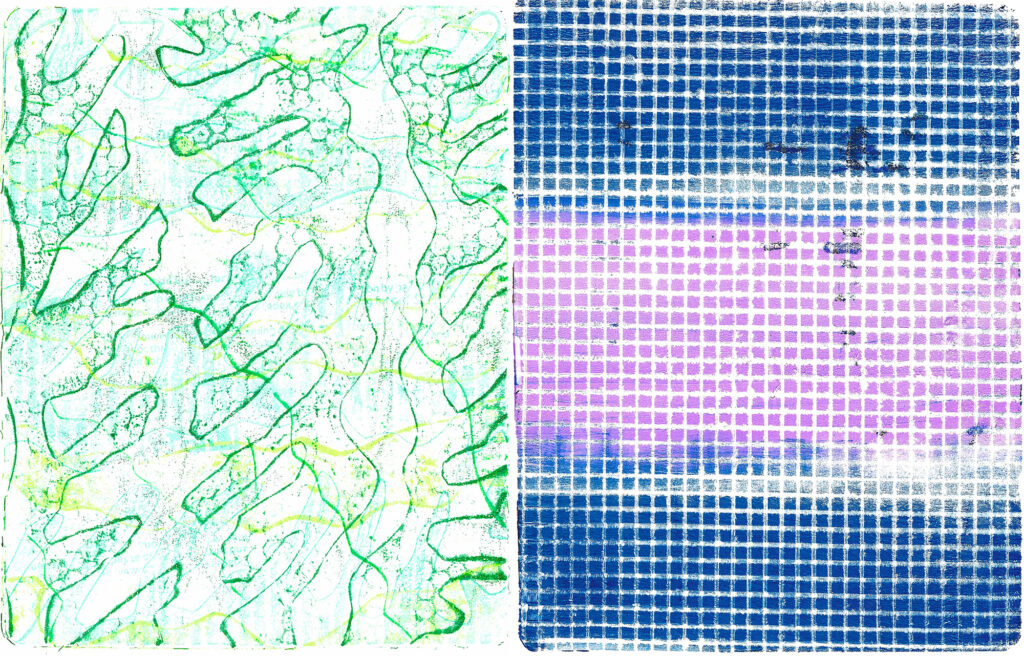
(L) 48, 2025 Acrylic print on paper, 8″ x 10″. / (R) 160, 2025, Acrylic print on paper, 8″ x 10″.
P: In 48 seaweed and organic sea life come to mind. The grids of 160 with opposing colors create a striking contrast. The vivid colors fading into each other add to the worn texture. Passage of time and stillness.
J: With 48, I was trying out a new exacto knife and trying to stray from my obsession with circles. In doing so I created these organic shapes that resembled seaweed. In 160, I used a piece of corrugated cardboard that I removed one side of and pressed it into the layer of paint on the plate. Then I turned it the other direction, and pressed it into the plate again.
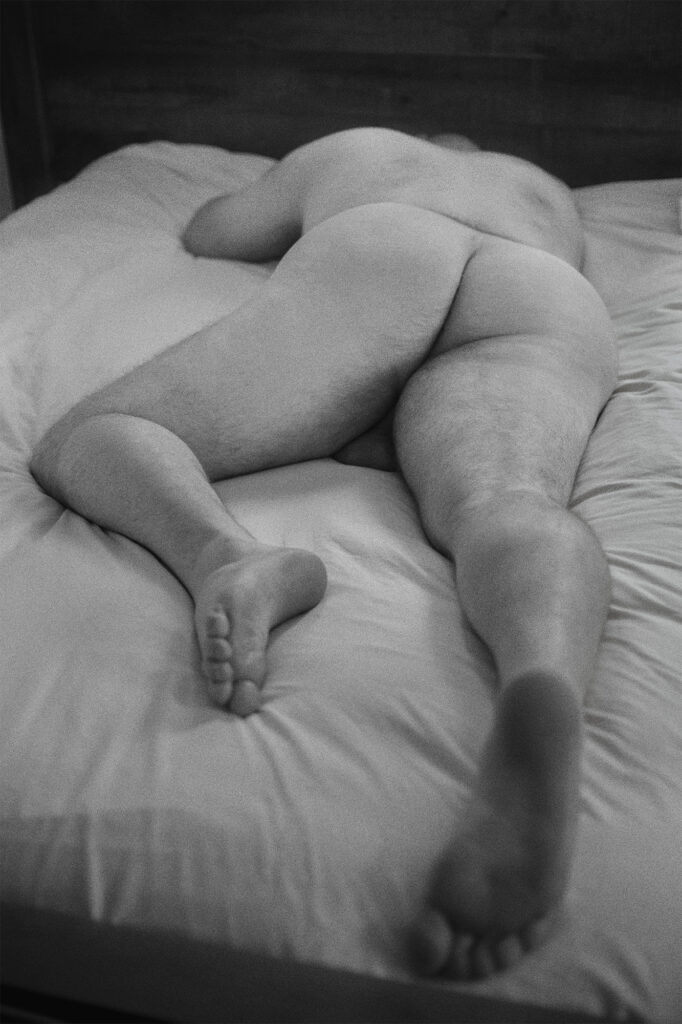

144, 2025, Acrylic print on paper, 8″ x 10″.
P: In 144, a sense of coolness and absence; however, the piece is full. Chemical processing and bleaching. Manipulating states.
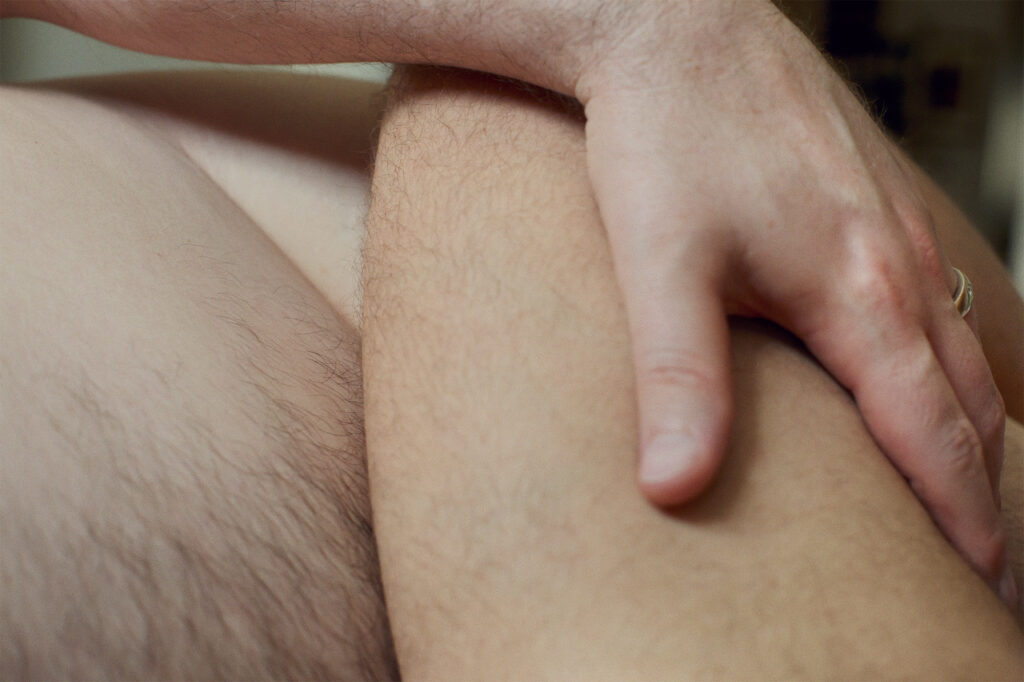

498, 2025, Acrylic print on paper, 8″ x 10″.
P: 498. Evil enters through different means. Tension and impact. We are left with the result of what transpired.
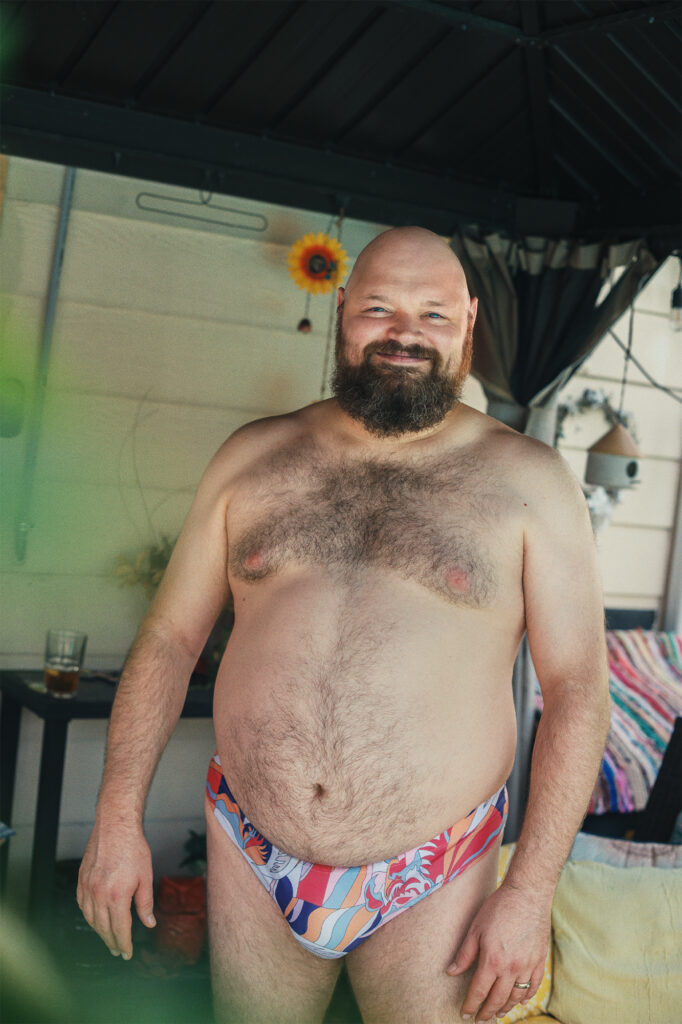

(L) 131, 2025, Acrylic print on paper, 8″ x 10″. / (R) 456, 2025, Acrylic print on paper, 8″ x 10″.
P: 131, bullet holes, the back of a painting. The varying intensities of red bring us on a journey. 456, now we are in the forest. Trees are the lungs of the planet, providing life and oxygen.
J: With print 131, I love this effect. This happens when not all of the paint pulls off the plate. Instead of cleaning the plate, I use what is left and add to it to then create another print.
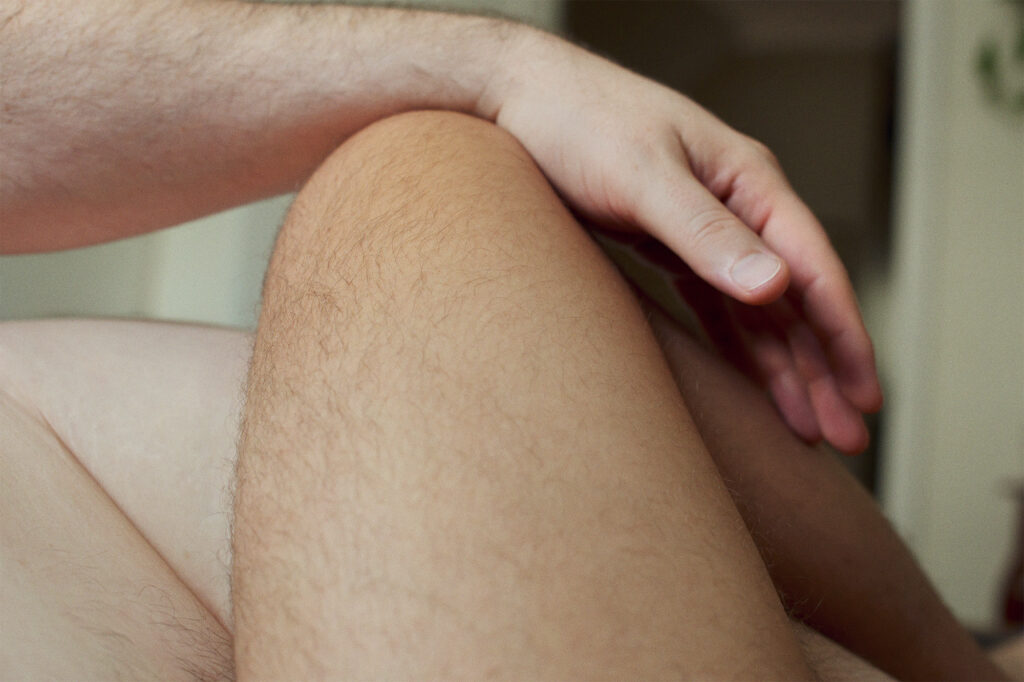
Intimacy in many forms.

95, 2025, Acrylic print on paper, 8″ x 10″.

393, 2025, Acrylic print on paper, 8″ x 10″.
P: 393, a network. Cellular or larger in scale. Chaos or a signal passing through the air. Many questions, many possibilities.
J: This is actually a ghost print. Sometimes I tape two pieces of paper to the mat under my gelli plate. I alternate the paper when pulling the layer off the print from the plate. In this print, I used strips of curvy paper for the yellow lines. This is what was left on the gelli plate when I removed the stripes of paper, and the same goes for the purple. I placed paper circles down on a layer of purple paint and then used the same paper to pull that layer.
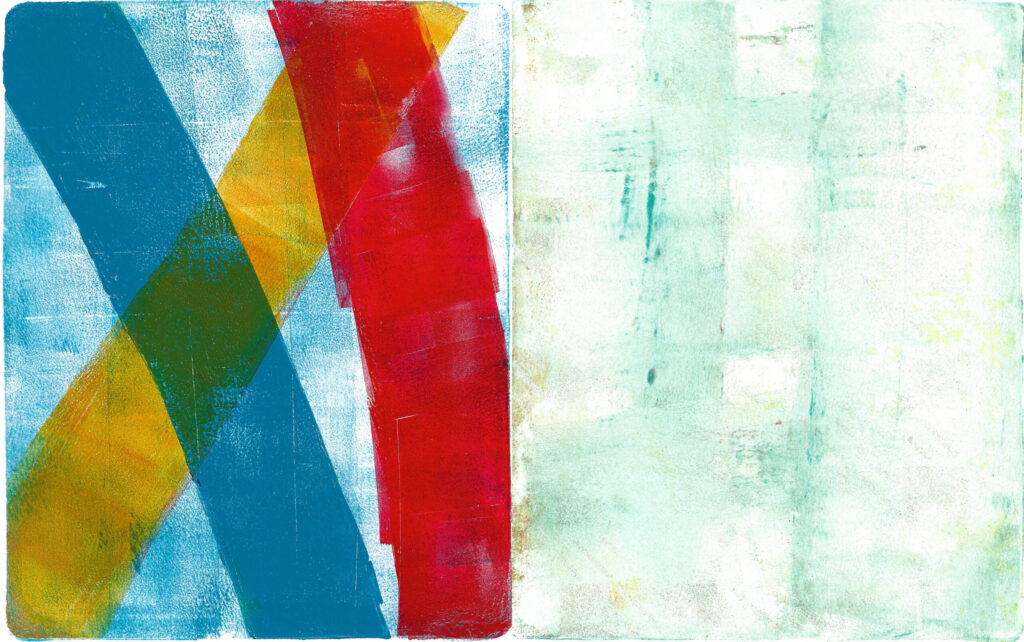
(L) 231, 2025, Acrylic print on paper, 8″ x 10″. / (R) 340, 2025, Acrylic print on paper, 8″ x 10″ .
J: With prints 231 & 95, I used a small roller to roll out the stripes of color on the plate and layered the stripes to get depth with the blending of the colors.
P: What inspires you? Do you find men to be inspiring?
J: Circles are currently a large inspiration and influence in my work. Of course, I find men inspiring in my work! The male form is wonderful and has fascinated artists and gay men for centuries.
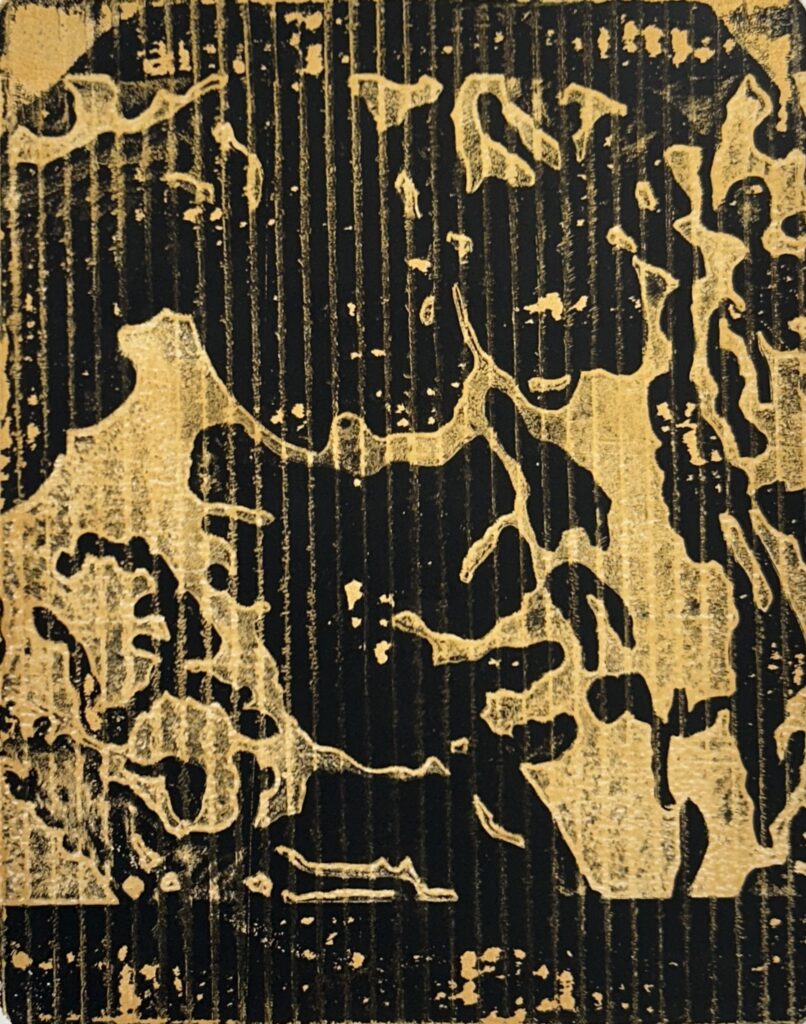
598, 2025, Acrylic print on paper, 8″ x 10″.
598, is a lino block carving that I did in college that I dug out of storage and have been exploring different colors with. This is an abstract male torso. It depicts the pecs and the abs of the male form.
P: What’s your favorite part of a man?
J: This is hard to choose just one. I love a good set of soft lips, but a man’s hands are beautiful as well.
This conversation has been edited and condensed.
Gay Tv 2025